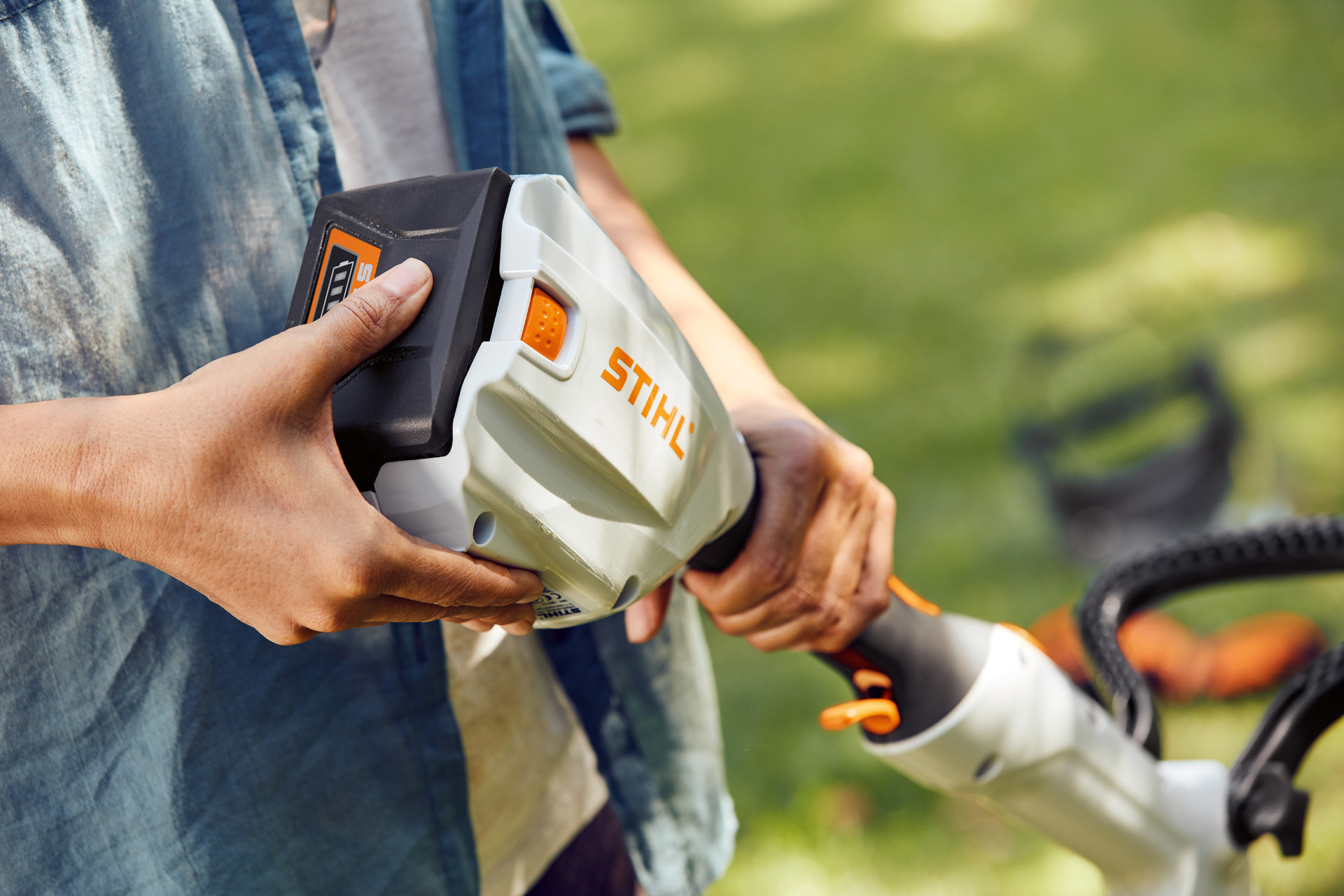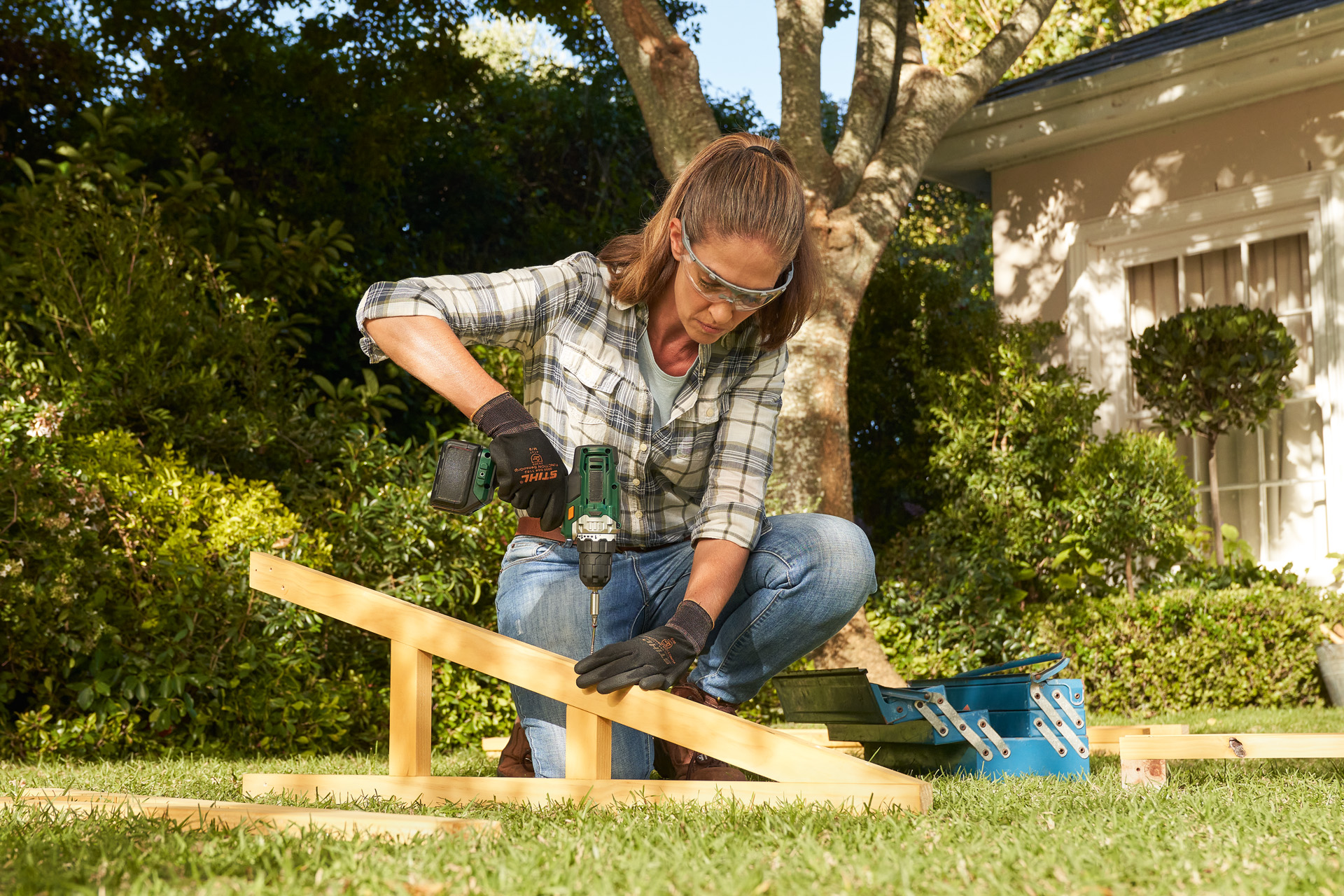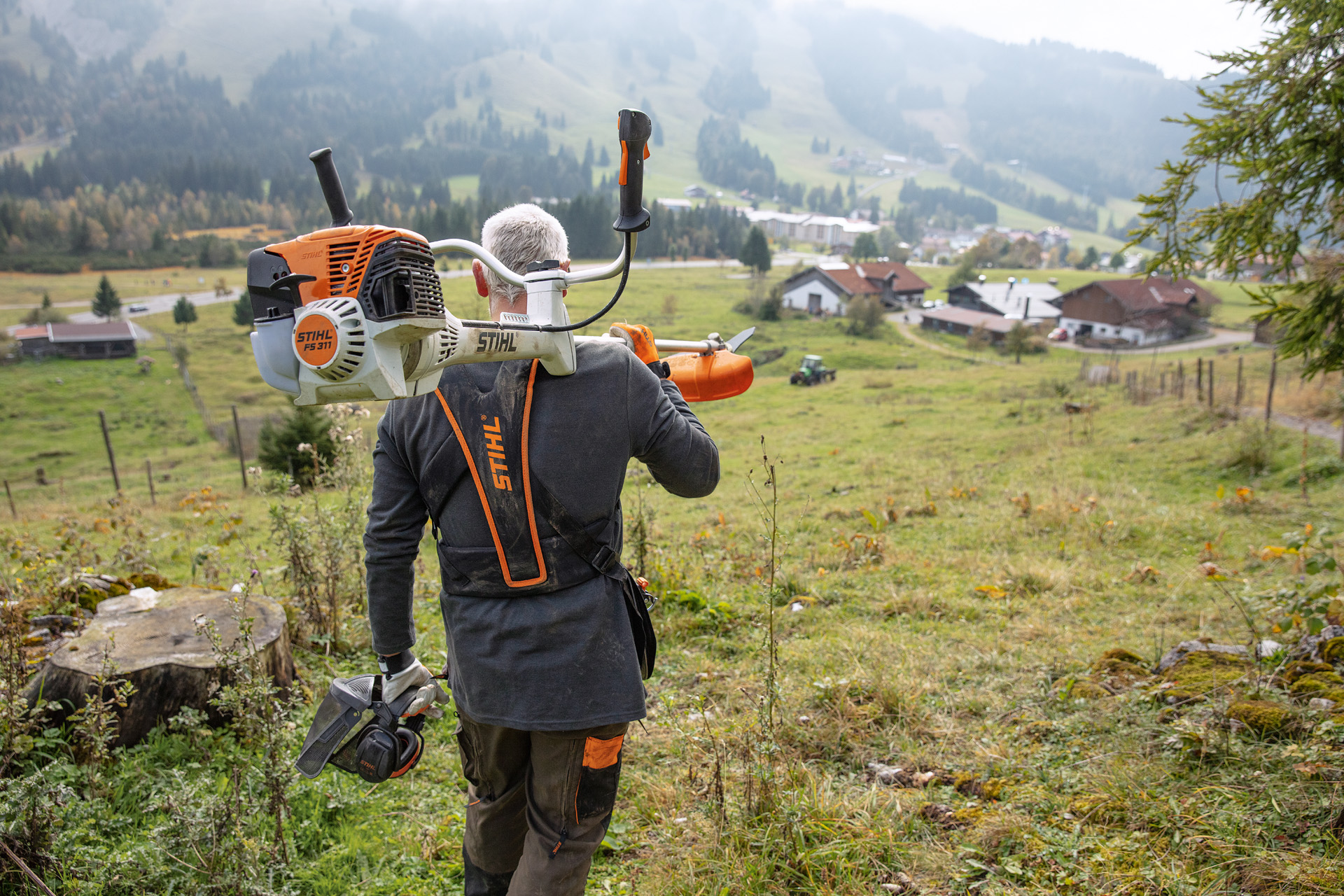All about charging a lithium-ion battery
The lithium-ion battery is up-to-date technology, but some old-fashioned myths persist. Find out the facts about charging your Li-ion battery.
10.07.2023

Charging a new Li-ion battery
Many people think that batteries need to be fully charged straight after purchase – preferably overnight for at least ten hours. The reasoning is that failure to do this will mean the full capacity is not available after charging, but this is not the case with lithium-ion technology. It was necessary with nickel cadmium (NiCd) batteries, which have been largely superseded, because they had a high self-discharge rate – so if a battery was on a dealer’s shelf for a long time, it would lose power and need charging after purchase.
No long initial charging needed for a Li-ion battery
High-tech lithium-ion batteries do not need a long charge before first use. STIHL supplies every battery with around 30% charge on delivery – however long your dealer has stored it for. Because STIHL lithium-ion batteries are protected against self-discharge, you can rely on this level of charge on purchase. Before first use, you should charge a Li-ion battery to 80-100%; charging to this level takes between 30 minutes and four and a half hours, depending on the battery.
What is the memory effect?
The memory effect describes the permanent loss of capacity that nickel cadmium batteries are affected by. Repeated partial charging reduces the amount of power the battery makes available, as it only “remembers” the most recently added amount of energy, rather than its full capacity. The advent of the Li-ion battery means this issue with partial charging is a thing of the past.

Advantages of lithium-ion batteries
STIHL uses high-tech lithium-ion cells in all its cordless products. This technology features exceptionally low self-discharge, meaning the need for full charging a lithium ion battery before every use is eliminated, and your new tool is ready to go in just a short time. In a year, a STIHL Li-ion battery loses just 1-3% of capacity via self-discharge.
Optimum protection against over-discharge
A STIHL lithium-ion battery has built-in electronics that automatically set the battery to a rest state if it is out of use for long periods. This protects against over-discharge.
Worth noting!
All STIHL batteries are supplied to dealers with a factory default charge level of 30%. Before first use, the battery should be charged to 80-100%.

Is it dangerous to charge a battery for too long?
It’s normal for a battery to become hot when charging, and is not a cause for concern. High-tech Li-ion batteries carry a very low fire risk, thanks partly to the integrated battery management system, which ensures that when a battery reaches its full charging capacity , the lithium ion battery charging process is stopped and the current switched off. This prevents overcharging and the associated heat build-up.
Protection against battery overheating
To prevent overcharging or excessive heat build-up, STIHL only uses Li-ion cells that meet the highest safety standards. Every STIHL battery and charging station is fitted with safety mechanisms to prevent overcharging and heat build-up.
Battery management system monitors temperature
Each cell in a STIHL Li-ion battery is monitored by a battery management system. An integrated sensor measures the temperature at the hottest point inside the battery; if the temperature is too high, the charging process is interrupted.
When charging a lithium-ion battery, both the battery and charging station continue to exchange data: when the charge level reaches 80%, the charger continues charging but automatically switches to a very low, gentle charging rate. When the Li-ion battery is fully charged, the charging station automatically stops the charging process by switching off the current.

What the symbols on your Li-ion battery-powered cordless tool mean
The brushless electric motor (EC) from STIHL is energy-efficient and almost wear-free, thanks to features including the upstream STIHL EC electronics. Functioning as an intelligent switching centre, this detects which battery is installed in the power tool at any time and supplies the EC engine with the right power output for that battery. The power tool is supplied with the optimum power, constantly throughout the battery discharge process.
STIHL Li-ion battery-powered cordless tools with this symbol can also be used in the rain. The information signs on the tool and in the operating instructions must also be taken into account. Please note that rain, mist and other moisture occur at different levels of intensity, and that the tools cannot be used in extreme conditions. It also does not apply to the charging process.
Battery technology makes STIHL cordless power tools ideal for noise-sensitive areas such as hospital grounds, parks and residential areas. Follow the information provided in the user manual.
With the STIHL cordless systems’ replaceable lithium-ion batteries, you never lose power during work: with two batteries for charging and using, you can always simply carry on working.
If the battery becomes hot
Electrical safeguards in the battery, charging station and power tool prevent overheating, automatically switching off functions at critical points. In the unlikely event of overheating, all battery cells are protected by robust and flame-retardant housing.
Does the temperature of a battery impact on the amount of energy supplied?
It was once widely believed that you should place a battery on a heater during charging, on the grounds that extra heat would increase the electrical activity during the charging process, thereby preserving and extending the life of the battery. The theory even suggested that a fully discharged battery could spring back to life if heated, as only a warm battery can make use of all its energy reserves. Today we know that not only is this false, but this process also damages the battery.
Do not heat a Li-ion battery
Your Li-ion battery should not be placed on a heater for charging. Warming a charging battery does not save battery life and does not increase the capacity – in fact, the battery may be damaged if temperatures are too high or too low. Your Li-ion battery is best charged at normal room temperature or at moderate outdoor temperatures. We advise that you always check your battery’s permissible temperature range.
During charging and discharging, ions move from one battery electrode to the other, depending on the direction of flow. If the battery is made too hot by the process, the particles accelerate and the material breaks down, leading to reduced battery life. If the battery overheats, in a worst-case scenario highly flammable gases may be released meaning that the battery becomes unusable. In general, we advise that you are always aware of your battery’s permissible temperature range. Details on the ideal charging temperature for Li-ion batteries can be found below.

Excessively high temperatures reduce battery life
In simple terms, a high-tech Li-ion battery consists of an anode, cathode, a separator, and electrolyte. Electrolyte is a chemical compound in a liquid or gel-type state, which ensures that electrically charged particles (ions) are transported from anode to cathode. If temperatures are too high during charging or use, the ions move between the anode and cathode and the electrolyte material breaks down; the battery then becomes unusable.

Protect your battery against cold weather and frost
A Li-ion battery may also be damaged if temperatures are too low; whereas particles are accelerated when hot, in cold conditions the process slows down dramatically, so a frozen battery may be impossible to charge. We recommend you do not store your battery and cordless power tool outdoors during the winter, and always ensure moderate ambient temperature when charging or storing, in a basement or garage for example.
Ideal charging temperature for lithium-ion batteries
Your STIHL Li-ion battery can be charged without a problem at temperatures between 5°C and 40°C. STIHL charging stations also incorporate safety features so that if your battery is too hot when inserted into the charger after a long period of use, the charging process will only begin when it falls to an appropriate temperature.
STIHL battery charge indicator
The four LEDs on a STIHL Li-ion battery communicate the charge level, but can also indicate a malfunction on the power tool or battery. Press the button on the battery and the LEDs will light up green for around five seconds, then indicate the charge level. If only one LED flashes green, the battery level is low. The green LEDs also indicate the charge level while the Li-ion battery is in a charging station (if no LEDs are lit, the charging process is complete). If the LEDs are lit up or flashing red during charging, a malfunction has occurred.
Summary: charging a Lithium-ion battery
- A STIHL lithium-ion battery should be charged to 80-100% before first use
- Safety technologies prevent Li-ion batteries from overheating
- Overnight charging of a lithium-ion battery is safe
- Protect your Li-ion battery against damp, heat, and cold





